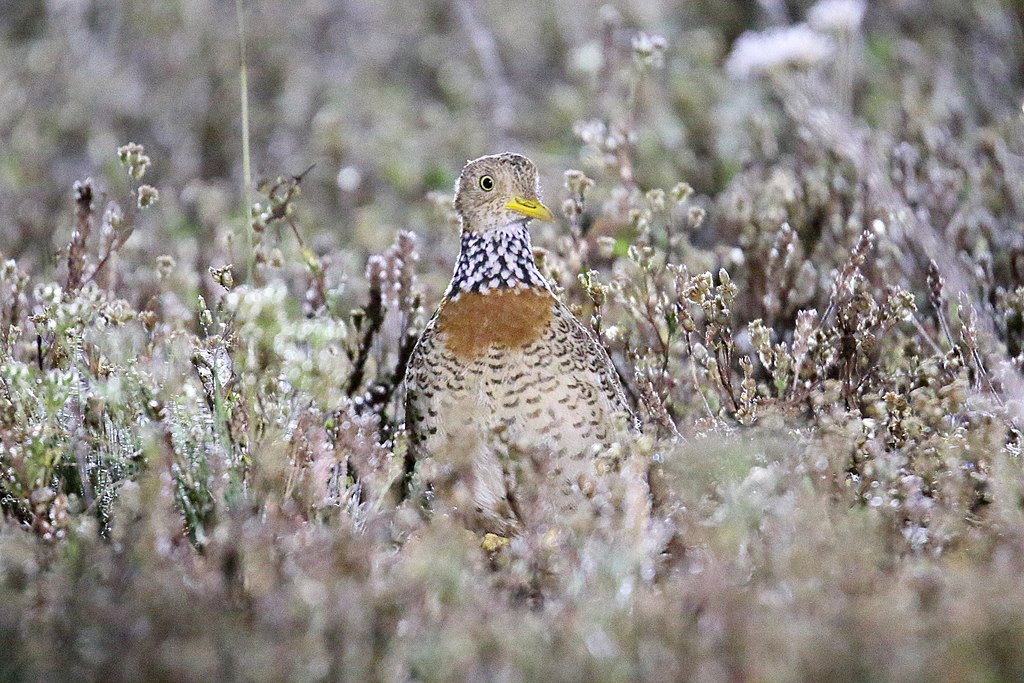Little River critically endangered ecosystem at risk

Feature Image: The outskirts of Little River, facing towards the site of the proposed logistics precinct.
The National Trust is concerned for the critically endangered Western Basalt Plains Grasslands in Little River, where Pacific National are proposing to develop a new freight hub, the Little River Logistics Precinct. We believe the proposed location for a project of this magnitude is inappropriate due to the unnecessary pressures it would place on the grassland and ephemeral wetland ecosystems.
Between Melbourne and Geelong, nestled near the base of the You Yangs is the small town of Little River. A charming rural town on the outskirts of Melbourne, it is surrounded by Natural Temperate Grassland, a part of the Victorian Volcanic Plain bioregion.
The National Trust has assessed the significance of the Western Basalt Grasslands and states the following:
The Western Basalt Plains grasslands are of high significance for both cultural and biological reasons. The community supports a significant number of threatened plant and animal species and is recognised as being of the most endangered vegetation communities in Australia. High quality remnants are generally of National or State significance for conservation. As the remnant grassland areas occur mainly in areas set aside from European agricultural or urban development they often coincide with pre and post contact historic sites, such as evidence of Aboriginal daily and ceremonial activity, and relics from the pastoral era, such as cemeteries, rail lines and town commons. The grasslands provide brilliant floristic displays in the late spring and year-round their appearance stands in stark contrast to the surrounding paddocks’ uniform colours of improved pasture. They provide tangible reminder of both the impact of European settlement on the natural environment and of the desirable prospect posed by the grasslands to early settlers.
Image: Swamp Everlasting (Xerochrysum palustre) growing in the VVP.
These grasslands have undergone severe degradation and fragmentation and are at high risk of extinction with only 5% of the grasslands remaining according to a 2011 report by the Department of Sustainability, Environment, Water, Population and Communities (now known as DCCEEW). It is estimated that now this number is much lower at 2%.
Image: Plains-wanderer (Pedionomus torquatus), a species once abundant in the Temperate Grasslands of the VVP. Source: Dominic Sherony, CC BY-SA 2.0, Wikimedia Commons
Pacific National is an Australian freight company which provides important freight services across Australia. With Pacific National’s lease at Dynon Rail Freight Terminal set to end in 2029, the company is proposing an alternative freight hub to accommodate their growing business.
Five potential areas were investigated for a new logistics hub and three properties in Little River (1.5 km from the town) were selected as the preferred option due to the proximity of the existing interstate railway corridor and other factors.
Preliminary targeted flora and fauna surveys on the three properties have found the critically endangered Large-headed Fireweed (Senecio macrocarpus) and the endangered Tussock Skink (Pseudemoia pagenstecheri), which would be impacted by the proposed project.
 Image: Map of the proposed logistics precinct. Source: Pacific National
Image: Map of the proposed logistics precinct. Source: Pacific National
Looking beyond the land that will be immediately impacted, the disturbance footprint of the logistics precinct may also have undesirable impacts on the Port Phillip Bay (Western Shoreline) internationally important Ramsar wetland.
As the project will have detrimental impacts on EPBC listed threatened ecological communities, individual species, and possibly the Ramsar wetlands, it will be a controlled action requiring approval from the federal Minister for the Environment and Water.
The Victorian Minister for Planning has requested an Environmental Effects Statement (EES) to be completed. The EES will essentially investigate the effects on the ecosystem and biodiversity, as well as the impacts on the wellbeing of the local residents and the socio-economic impacts on the township.
Community members can participate by attending consultation sessions with Pacific National and also provide feedback on the EES when it is exhibited for public review. As the EES is still in the scoping stage, dates for public feedback have not yet been announced.
More information on the proposed logistics precinct can be found here.
More information on the EES process can be found here.


When does the destruction of this critically endangered ecosystem end? How many more cuts can it endure? Little River is already seeing the effects of urban growth, with Legoland property developments extending their tentacles across the landscape. Once these ecosystems are lost, they can never be recovered.